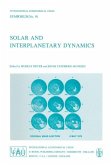Our understanding of galaxies, the building blocks of the Universe has advanced significantly in recent years. New observations from ground- and space-based telescopes, the discovery of dark matter, and new insights into its distribution have been instrumental in this. This textbook provides graduate students with a modern introduction to the gravitationally determined structure and evolution of galaxies. Readers will also benefit from detailed discussions of the issues involved in the process of modeling complex stellar systems. Additionally, the text provides an accessible framework for interpreting observations and devising new observational tests. Based on the author's extensive teaching experience, this second edition features an up-to-date view of basic phenomenology, a discussion of the structure of dark halos in galaxies, the dynamics of quasi-relaxed stellar systems and globular clusters, galaxies and gravitational lensing and an introduction to self-gravitating accretion disks. Extended problem sets are available from the accompanying resources website: www.cambridge.org/9781107000544.
Dieser Download kann aus rechtlichen Gründen nur mit Rechnungsadresse in A, B, BG, CY, CZ, D, DK, EW, E, FIN, F, GR, HR, H, IRL, I, LT, L, LR, M, NL, PL, P, R, S, SLO, SK ausgeliefert werden.









